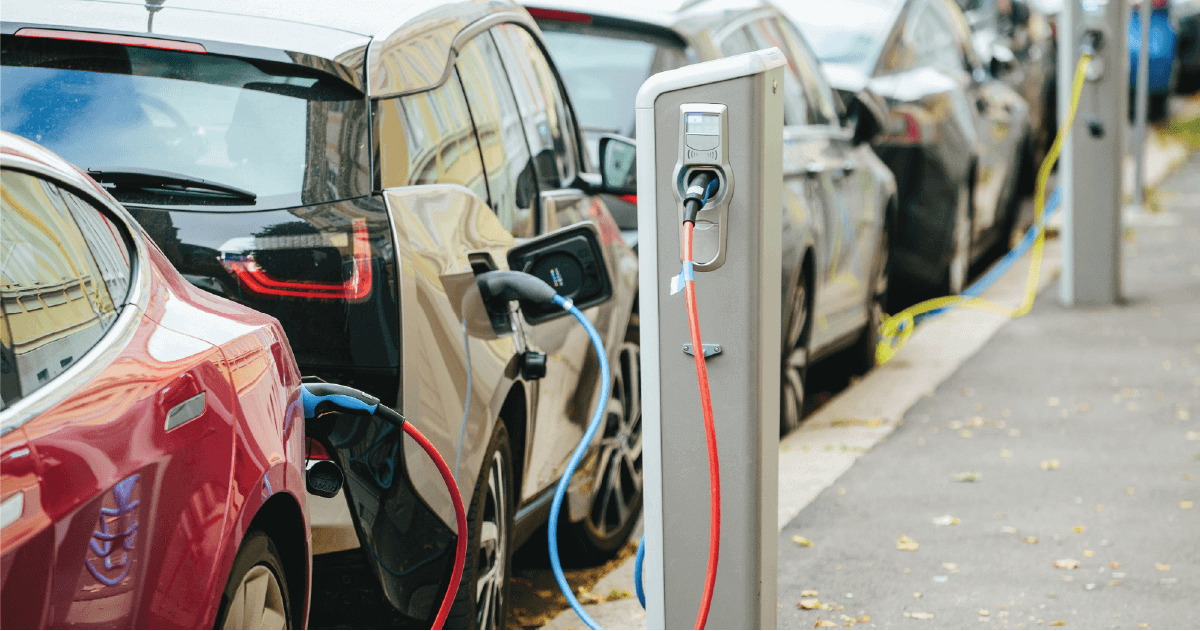- June 29, 2023
- Perspectives, Trending Topics
Why Every Community Should Have an Electric Vehicle Readiness Plan


Jeffrey Elsey, PE, CAPP, LEED AP
Transportation Project Engineer
The reliability of alternative fuel source technology, backed by government investment in electric vehicle (EV) charging, has sparked a generational energy revolution.
In 2022, the EV market experienced a more than 50% rise from 2021, and U.S. buyers also registered more than 750,000 new EVs. The Biden administration targets EVs to make up 50% of all new car sales by 2030, thanks to the availability of more models and falling prices as production ramps up.
Our communities expect EV charging infrastructure to keep pace with their needs, support their daily lives, and promote sustainability, which is why every community needs to develop an EV readiness plan.
What Does an EV Readiness Plan Include?
Leading cities, counties, campuses, and organizations are already planning for EV readiness, and their plans include:
- Upgrading utilities
- Selecting the right EV charging equipment
- Modernizing policies supporting EV charging needs
- Preparing for full fleet EV transitions
Whatever approach communities choose to take, readiness plans typically focus on at least one of the following types of charging infrastructure.
Community Charging Infrastructure
These EV chargers are accessible to anyone in the community. Community charging infrastructure spans government-owned property, such as metered street parking and city-owned parking facilities, and commercial property, such as retail and dining locations. On-campus charging stations at universities or hospitals for staff, students, and visitors are also included in this type of charging infrastructure.
Fleet Charging Infrastructure
These EV chargers are dedicated to owned fleets. Organizations typically place these in restricted parking areas that are only accessible to fleet vehicles.
Transit Charging Infrastructure
EV chargers in this category are designed only for public transit vehicles, most commonly buses. Transit agencies may also install chargers in bus station parking garages for customers and/or employees.
After choosing the type of charging infrastructure, stakeholders must consider additional project elements and critical path items that feed decision-making and implementation. The following make up logical considerations that give organizations a cohesive plan that will help avoid costly pitfalls in the implementation phase:
- Set vision and system goals
- Engage stakeholders
- Initiate organizational preparedness
- Evaluate zoning ordinances and policies
- Assess system-wide utilities
- Calculate projected system demands
- Forecast EV adoption
- Prioritize a set of EV charging station locations
- Determine maintenance needs and motor pool assessment
- Procure equipment and a vendor
- Create and finalize the design
- Begin construction
- Seek grant opportunities (seeking funding for infrastructure deployment should be conducted as opportunities become available)
The Benefits of an EV Readiness Plan
Installing EV charging infrastructure requires careful planning, but a thorough readiness plan helps anticipate infrastructure needs holistically, allowing for budget allocations and avoiding supply-chain issues. An EV readiness plan prepares organizations to:
- Respond to community needs
- Support economic development
- Ensure equitable access to clean transportation
- Avoid costly delays to projects
A cohesive EV readiness plan will also allow organizations to prioritize needs and compete for funding opportunities. Thanks to the federal government’s push for clean technology and EVs, billions of dollars are available to support EV charging infrastructure. For example, in 2021, President Biden signed the Bipartisan Infrastructure Law (BIL), which includes $5 billion for the National Electric Vehicle Infrastructure (NEVI) Formula Program and $2.5 billion in the Discretionary Grant Program for Charging and Fueling Infrastructure.
State and local governments and utilities are also offering a myriad of incentives. An EV readiness plan can help stakeholders target available funding and incentives to support business decisions and inform goals.
The Risks of a Reactive Approach
Readiness plans anticipate the community’s rising EV adoption and the implications for infrastructure, land usage, costs, equity, and economic development. A proactive approach can avoid pitfalls such as:
- Deploying different hardware across the community, which can make charging stations unable to communicate with each other. Customers would also have to learn multiple vendors’ on-screen interfaces and payment processes.
- Installing chargers based on revenue generation. EV charging network operators often base their recommendations on profit potential, not a larger strategy that includes the community’s needs as a whole.
- Signing vendor contracts that don’t share valuable data with community managers. The partial data prevents them from making fully informed decisions about future charging infrastructure deployments.
- Returning EV fleet vehicles because the utility cannot support their charging needs.
- Forcing residents to limit their housing options based on the availability of reliable charging stations.
- Siloed decision-making that conflicts with regional or adjacent agencies and results in more costly infrastructure deployment.
With electric vehicle prices predicted to fall to the price of gasoline cars, EVs will impact all cities, counties, campuses, transit agencies, and fleet owners in the near future. Now is the ideal time for planners to capture funding and build the next era of transportation, transit, and parking infrastructure for their communities—starting with a compelling EV readiness plan.
About the Author

Jeffrey Elsey, PE, CAPP, LEED AP
Jeffrey is a parking and mobility strategist specializing in transportation systems infrastructure investments and financial evaluations. He sits on the National Parking Association’s Parking Consultants Council and has worked with large municipalities and campuses throughout the country to develop long-term parking and transportation capital and programmatic strategies targeted to enhance system efficiencies, financial performance, and customer satisfaction.
